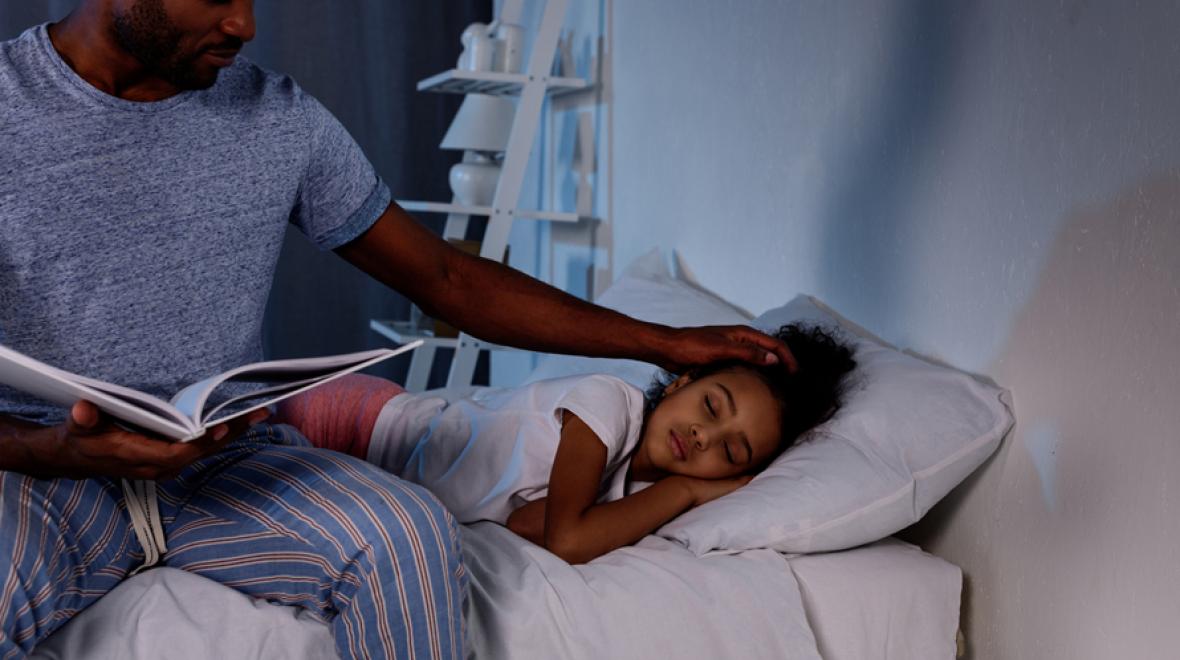
The one piece of sleep advice that will serve you best throughout your years as a parent is this: Give your child the sleep support he needs, and no more. It’s that simple. Respond to his needs compassionately, and learn when to step back, because, really, he’s got this. This “line” is tricky to find, and it shifts: Your child may need you more at certain times, less at others. But once you figure out this essential balance, you’ll become your own sleep expert, supporting your child’s needs with compassion and wisdom for the rest of your parenting journey.
Here are few tips to help you “prime” your child for healthy rest and increase his natural drive for sleep.
Support your child’s circadian rhythm. Forget the old “never wake a sleeping child” adage — embrace your role as your child’s guide to a regular sleep cycle. It’s perfectly appropriate to wake a child when she is sleeping at an inappropriate time — e.g., sleeping past normal wake-up time in the morning or napping too long or too late in the afternoon — to protect her healthy sleep routine.
Keep a sleep log. Tracking your child’s sleep is the best way to detect patterns that will help you identify the root causes of any sleep troubles. The easiest way to do this:
- Start with a college-ruled notebook or a sheet of lined paper. Beginning at the top left corner of the page, mark each line as one hour (12 a.m., 1 a.m., 2 a.m., and so forth.) You’ll end up with a vertical line of numbers from 12 a.m. to 11 p.m.
- Mark a solid vertical line through the hours your child sleeps. Make a dot to mark nighttime awakenings. Make a jagged line to indicate periods of fitful sleep, long awakenings, or crying. When she’s awake, don’t mark anything.
- At the end of each day, make a few quick notes. How was your child’s demeanor? How did she seem when she woke up? How easy was she to put to bed?
After tracking your child’s sleep for a week (or even just a few days), you’ll likely have a head start into understanding your child’s sleep patterns and needs.
Rise and shine. Preparation for a good bedtime begins first thing in the morning: At least 15 minutes of strong morning light exposure combined with a morning meal tells your child’s brain that it’s time to wake up, and also helps them feel sleepy come bedtime.
Maximize melatonin. Darkness is a powerful cue regulating the body’s biorhythms and a potent sleep aid for children, as it triggers the brain’s natural production of melatonin, a hormone that regulates sleep–wake cycles. Dim the lights an hour or so before the time you’d like your child to be in bed.
Black out the bedroom. Nighttime light exposure interferes with the body’s production of melatonin. Every sleep doctor I’ve ever interviewed has said the same thing: Bedrooms should be completely dark — the darker, the better. So, douse those cute nightlights — they are not necessary for babies and can even be harmful to sleep quality.
Create a quiet sleeping space. Add a pure, high-quality white noise to create a constant screen of background sound that makes sudden noises less detectable, and therefore less likely to rouse your little sleeper.
Monitor room temperature. Temperature is an important physiological cue that promotes sleep. When your child or the bedroom is too warm, this natural process is interrupted. Doctors say the ideal bedroom temperature is between 60 and 68 degrees.
Fuzzy-wuzzy is no more. It’s a myth that babies sleep best on soft, fuzzy surfaces. Fleece sheets, flannel sheets and sheepskins trap heat, which can lead to an uncomfortably warm sleep environment. Opt instead for simple cotton sheets to keep things cool.
Move that body! Physical activity promotes deep, restful sleep and is important for children of all ages, beginning at birth. For brand-new babies, this means ample time on their tummies and on their backs so they can look around, work their neck muscles and wiggle their arms and legs.
Master the art of the nap. Naps help young children rest and process new information, support healthy development and promote restful sleep at night. They should be long enough to be restorative, but no longer. Avoid naps longer than two-and-a-half hours; and for babies taking multiple naps, one to one-and-a-half hours per nap may be plenty.
For more science-backed strategies and solutions for a setting a peaceful bedtime routine, resolving nighttime parenting struggles and keeping your family’s sleep success going, get the author’s ebook “Ready, Set, Sleep."











